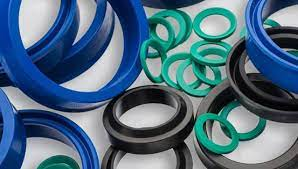
If you have ever wondered how synthetic rubber is made, you may have to start by looking back at the history of natural rubber. This substance dates back thousands of years to civilizations like the Inca. They used it in ancient sports balls, but it would melt when exposed to high temperatures. Eventually, it was accidentally dropped on a hot stove when mixed with sulphur by Charles Goodyear, who patented the process as he realised it didn’t melt. Eventually, this product found its way into automobile tyres and countless other household items.

Today, synthetic rubber is produced by polymerizing a substance and chaining it. It is then vulcanised, giving it a variety of different properties and industrial uses. While there are some differences between natural and synthetic rubber, there are several main categories. Read on to learn more about synthetic rubber and its uses.
Its properties vary greatly, but you can still recognise its differences in everyday products and in industrial settings. In the early 20th century, the rubber tree Hevea brasiliensis originated in Brazil. It was quickly introduced to countries in the Far East. World War II cut off natural rubber supplies from these countries, but synthetic rubber production rose exponentially, and US firms built 51 factories between 1942 and 1945. As a result, synthetic rubber production was nearly 100 times higher than it was in the preceding decade.
Raw rubber is very sticky, brittle, and smelly. Mastication is a common process for converting rubber into a more useful and usable material. During this process, mechanical rollers and presses chew up the raw rubber, making it softer and more sticky. In this step, chemical ingredients are added to the raw rubber. These chemicals help create the perfect material for a variety of uses. To find out more about UK Rubber Moulding, consider meadex.co.uk

After it is extracted, the latex is packaged in drums and sent to a mill for further processing. The clumpy latex is rolled into sheets by machine. Water is filtered out of the rolled sheets so that they can be sold or exported. In this step, the rubber is treated with chemicals and low gentle heating. Once it is processed, it is ready for use. In many industries, synthetic rubber is used in a variety of applications, including shoes, gloves, and countless more.
There are two basic types of rubber – synthetic rubber and natural rubber. While natural rubber comes from rubber trees, synthetic rubber is created by linking polymer molecules. Both types have a different set of properties. Natural rubber is made from latex produced by a rubber tree, whereas synthetic rubber starts with a base made from petroleum by-products.




